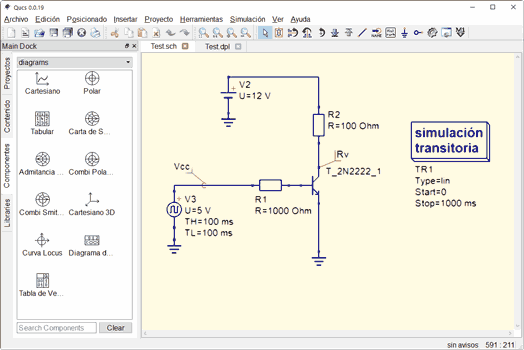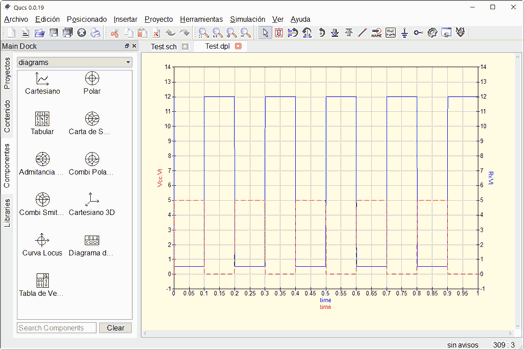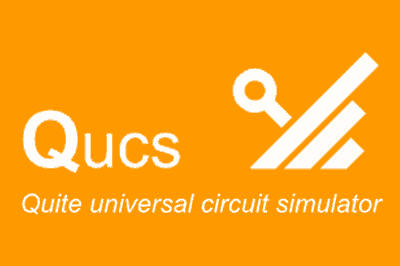Qucs (Quite Universal Circuit Simulator) is open-source software for simulating electronic circuits distributed under the GNU GPL license.
Qucs is a simple but functional alternative to more complex and professional solutions such as gEDA or PSPICE. It is sufficient for working with small to medium circuits and is suitable for all levels. Additionally, it is one of the few Open Source alternatives in the field.
Editing and simulating electrical circuits in Qucs is done through a graphical interface. The results can be displayed in different types of graphs, including Cartesian, tabular, polar, and timing diagrams.
With Qucs, it is possible to work with analog and digital circuits, and perform simulations of large signal, small signal, and electronic noise. It also allows for the incorporation of subcircuits modeled in SPICE, and simulation of digital circuits using VHDL and/or Verilog.
It is easy to use. Through the graphical interface, we can model the circuit we want to create by simply dragging the components from the library and connecting them with conductors. In general, the use is quite intuitive and pleasant.

Qucs incorporates a library that includes a considerable number of electronic components, covering the usual needs in most electrical circuits.
Next, we must add a simulation from those available and adjust its parameters. We must also configure the result window by adding the variables we want to monitor, as well as the necessary graphs and indicators. Finally, we run the simulation.

Qucs is compatible with Windows, GNU/Linux OS, and MacOS. Its latest official version is v0.19, from 2017. However, v0.20rc2, dating from May 2019, is already available on Github.
However, Qucs remains a project in development and, therefore, is not entirely free of flaws. For example, sometimes transient simulations may produce errors, although they are usually fixed by simply modifying the simulation parameters slightly.
You can find more information on the product’s website at http://qucs.sourceforge.net/. The code is also available at https://github.com/Qucs/qucs.
In conclusion, it is a very interesting program that allows us to simulate electronic circuits. It is simple but quite powerful, and covers most cases. It is a good alternative to more complex solutions, and fits perfectly in the home and educational fields.
